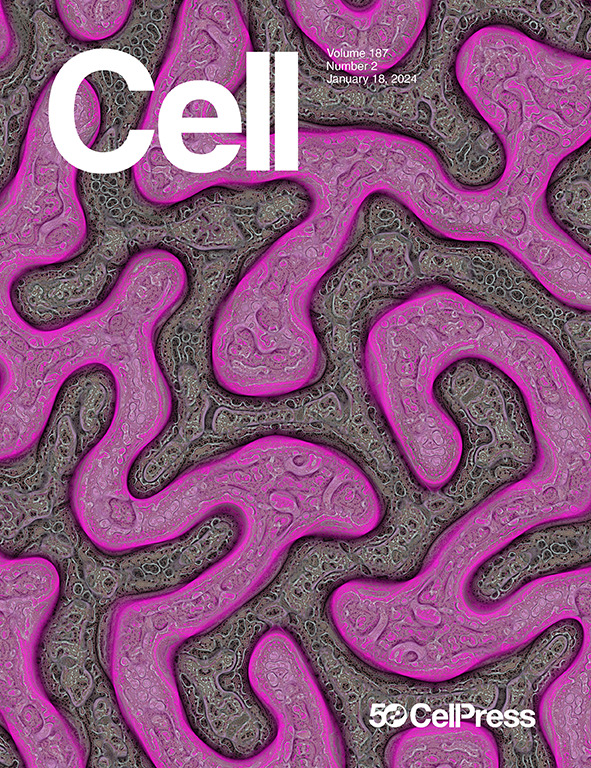Nanoscale DNA tracing reveals the self-organization mechanism of mitotic chromosomes
IF 45.5
1区 生物学
Q1 BIOCHEMISTRY & MOLECULAR BIOLOGY
引用次数: 0
Abstract
How genomic DNA is folded during cell division to form the characteristic rod-shaped mitotic chromosomes essential for faithful genome inheritance is a long-standing open question in biology. Here, we use nanoscale DNA tracing in single dividing cells to directly visualize how the 3D fold of genomic DNA changes during mitosis at scales from single loops to entire chromosomes. Our structural analysis reveals a characteristic genome scaling minimum of 6–8 megabases in mitosis. Combined with data-driven modeling and molecular perturbations, we can show that very large and strongly overlapping loops formed by condensins are the fundamental structuring principle of mitotic chromosomes. These loops compact chromosomes locally and globally to the limit set by chromatin self-repulsion. The characteristic length, density, and increasingly overlapping structure of mitotic loops we observe in 3D fully explain how the rod-shaped mitotic chromosome structure emerges by self-organization during cell division.

求助全文
约1分钟内获得全文
求助全文
来源期刊

Cell
生物-生化与分子生物学
CiteScore
110.00
自引率
0.80%
发文量
396
审稿时长
2 months
期刊介绍:
Cells is an international, peer-reviewed, open access journal that focuses on cell biology, molecular biology, and biophysics. It is affiliated with several societies, including the Spanish Society for Biochemistry and Molecular Biology (SEBBM), Nordic Autophagy Society (NAS), Spanish Society of Hematology and Hemotherapy (SEHH), and Society for Regenerative Medicine (Russian Federation) (RPO).
The journal publishes research findings of significant importance in various areas of experimental biology, such as cell biology, molecular biology, neuroscience, immunology, virology, microbiology, cancer, human genetics, systems biology, signaling, and disease mechanisms and therapeutics. The primary criterion for considering papers is whether the results contribute to significant conceptual advances or raise thought-provoking questions and hypotheses related to interesting and important biological inquiries.
In addition to primary research articles presented in four formats, Cells also features review and opinion articles in its "leading edge" section, discussing recent research advancements and topics of interest to its wide readership.
 求助内容:
求助内容: 应助结果提醒方式:
应助结果提醒方式:


